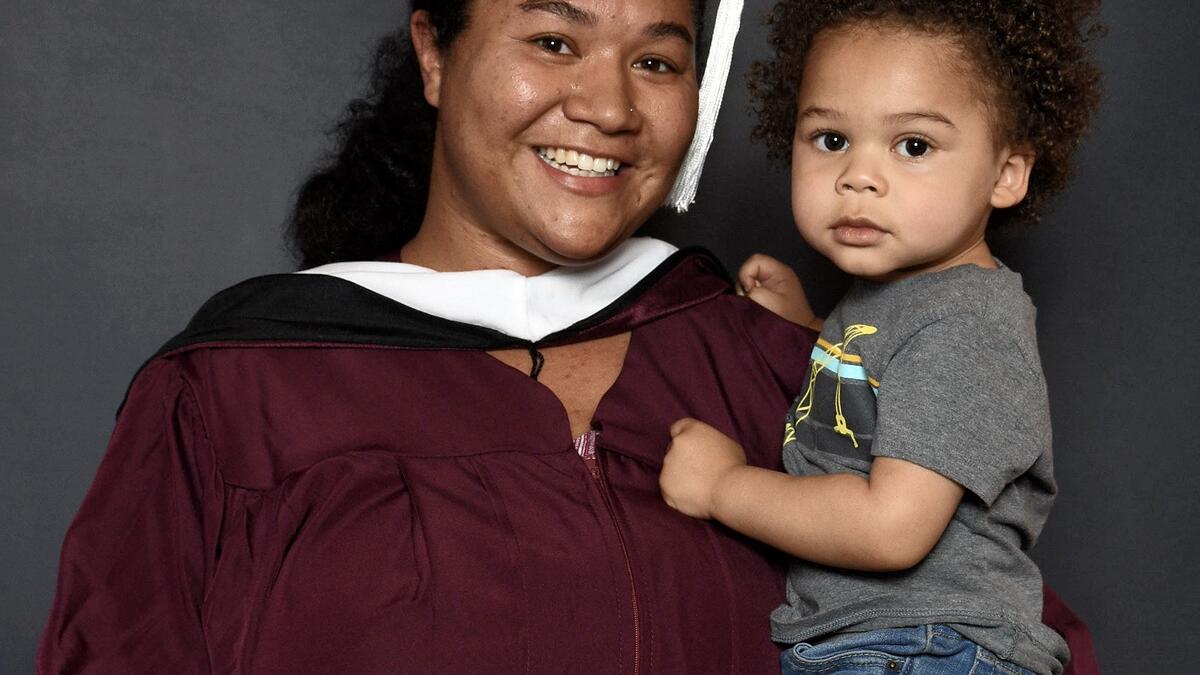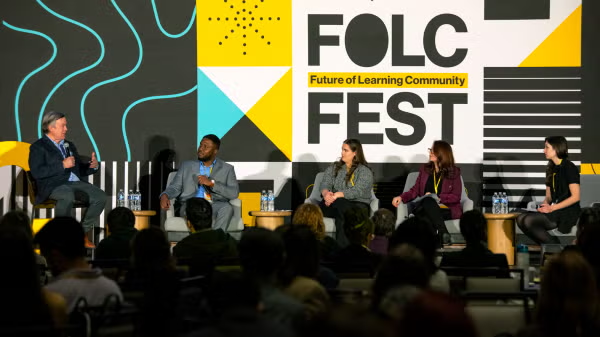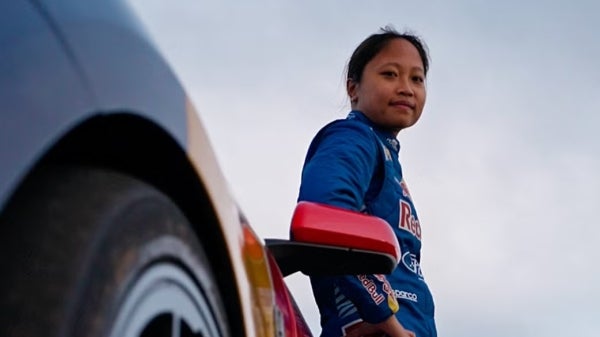Communication graduate juggles work and family with schoolwork to earn her degree

Charlese Bedford and her son.
Editor's note: This story is part of a series of profiles of notable spring 2021 graduates.
ASU graduate Charlese Bedford says friends and colleagues would often ask how she was able to juggle a full-time job, family responsibilities and online classes at the same time.
"If I think about it," said Bedford, "I believe I simply took it one day at a time.”
Bedford, who graduated in spring 2021 from the Online Master of Arts in Communication program in the Hugh Downs School of Human Communication, was able to complete her coursework late in the evening when her family slept.
"Working 40 hours a week, taking care of my son, who was at the time under the age of 2, keeping my home in order, making sure my husband was fed, transitioning my elderly mother from the Midwest to Arizona to live with us, and taking two classes a semester really took a toll on my body," said Bedford. "I was determined to complete my degree when my son turned 2 and I did. I want to instill in him the values of ambition, integrity and perseverance."
Bedford currently works as a graphic designer in Student Affairs Strategic Initiatives at Northern Arizona University.
Bedford's mentor in the online MA program, Kristin Dybvig-Pawelko, says she was a wonderful student to work with.
"Charlese's capstone project focused on training university employees in making their online content more accessible. Faculty and staff at NAU will now have the opportunity, thanks to Charlese, to ensure that their course content is available to students with disabilities. A truly timely project from a hard-working and dedicated student."
We asked Bedford to tell us more about her experiences with the online MA communication program.
Question: What was your "aha" moment, when you realized you wanted to enroll in the Online MA in Communication at ASU?
Answer: After graduating with a BFA in visual communication in 2016 from Northern Arizona University (NAU), I was ready for a break. I had been a nontraditional student and had work experience under my belt. I took time to focus on myself and see where I wanted to go. My “aha” moment occurred three years later. I decided to go to grad school and submitted my application three days after my son was born. I wanted to earn my master’s degree before my son was fully mobile so that I could concentrate on his learning needs. Plus, in the future, I would like to seek a position as an art director and potentially collaborate with professionals to design accessibility courses for higher education institutions.

Charlese Bedford and her son, working from home.
Q: What made you choose ASU?
A: ASU is well-known. ASU is international. When I say that I received my master’s from ASU, people know what university I am talking about. I am proud of ASU’s prestige and commitment to student success. I am proud because I am now part of that success.
Q: Is there a particular faculty member at ASU who was influential? What were the most useful classes you took?
A: I would not say there is only one particularly influential faculty member. I will say that all faculty members and their courses helped me to pinpoint and extend upon my passion for accessibility design and how it should be communicated. For example, Dr. Way (COM 598: Communication and Gender) gave me insight into why gendered practices in organizations are still used in the workplace culture today, which helped me understand why certain directors support initiatives but do not provide the needed resources to cause action or create change. Dr. Clark (COM 598: Communication in the Workplace) enhanced my knowledge of the importance of organizational knowledge sharing, which gave me the steps to begin my focus on sharing my own design expertise with colleagues. Dr. Stoda (COM 598: Social Influence and Persuasion) assisted in my own observations of the weapons of influence and how persuasion is used in every type of communication. This class has helped to grant me entrance into beginning the development of a collaborative professional development series with my fellow co-workers. And finally, both Dr. Gimbal (COM 598: Training and Development) and Dr. Dybvig-Pawelko (COM 540: Conducting Communication Research) provided me with the tools to create and develop a working proposal for a needed training at my workplace, which is now coming into fruition and will be an available training to staff and faculty at NAU in spring 2022.
Q: How did this school help prepare you for your current career?
A: The Hugh Downs School of Human Communication gave me an outlook of where my degree could take me. I feel like each course that I completed opened new doors to my own understanding of communication and how much it impacts the workplace. In my career, I realized the value of graphic design as a communication tool and how designing accessibility can give everyone the same communication abilities. Then I saw the need in my organization. ASU gave me the confidence to discover and voice that need.
Q: What advice do you have for students who may be interested in following your path?
A: Utilize the free resources available to you. I am a huge advocate for the online writing center. The writing tutors are wonderful and their advice on papers is vital to how well you perform in these courses. I also loved meeting with my success coach, Dalilah Diaz, over the phone. We were able to create a bond of sorts and she helped me think about my path. I often looked forward to these calls and felt pretty satisfied after each one. These support systems are part of why I was able to stay on track and finish my degree strong.
Q: What's something you learned while at ASU — in the classroom or otherwise — that surprised you, or that changed your perspective?
A: ASU is an amazing institution. The ASU online program in particular helped to change my perspective on earning a degree online. During my undergrad career, I took some online courses, but the majority of my work was in person. Looking forward, I can now attest to the fact that online education is just as valuable and can be done in the same amount of time it takes on a traditional path. I am proud to have received my graduate degree from such a prestigious school.
Q: If someone gave you $40 million to solve one problem on our planet, what would you tackle?
A: This is the hardest question to answer by far because there are so many problems on our planet that need to be tackled. I think currently the most important problem that needs a focus and could use the funds to actually kick-start a solution is an adequate and accurate education for underrepresented students in underrepresented U.S. communities. These communities being urban inner-city schools, reservation and rural community schools. These areas are our lowest rated and most underperforming districts because they are not afforded the same access as more affluent area city/suburban schools and private/charter schools. I believe $40 million could start a foundation to make sure all children succeed and can perform well in school. This also means free transportation and food are essential in the plan to guarantee the success of a student. As a country that once boasted how rich it was, I can see our richness in our children and we can only get there by providing the tools they need to make our planet better
More Sun Devil community

FOLC Fest 2025 explores Principled Innovation, leadership and learning at ASU
"Principled Innovation is about using our creativity, knowledge and resources to make decisions that ultimately benefit humanity…

These Sun Devils are inspiring the next generation of female athletes
This year, Women's History Month is celebrating the theme “Moving Forward Together! Women Educating and Inspiring Generations.”…
Founders’ Day 2025 celebrates legacy and innovation at ASU
"Honor the past, celebrate the present and invent the future." This motto encapsulates the spirit of Founders' Day, a…